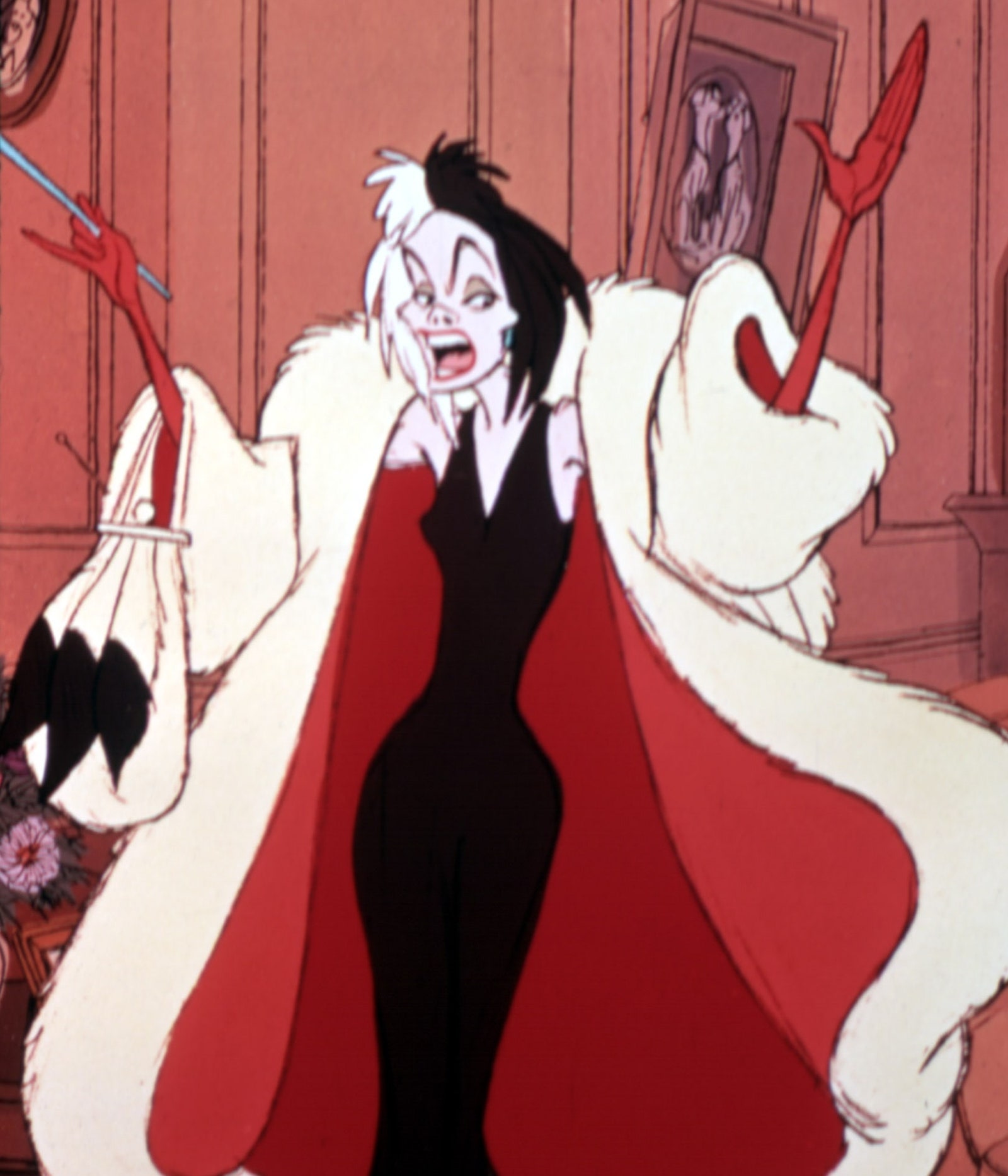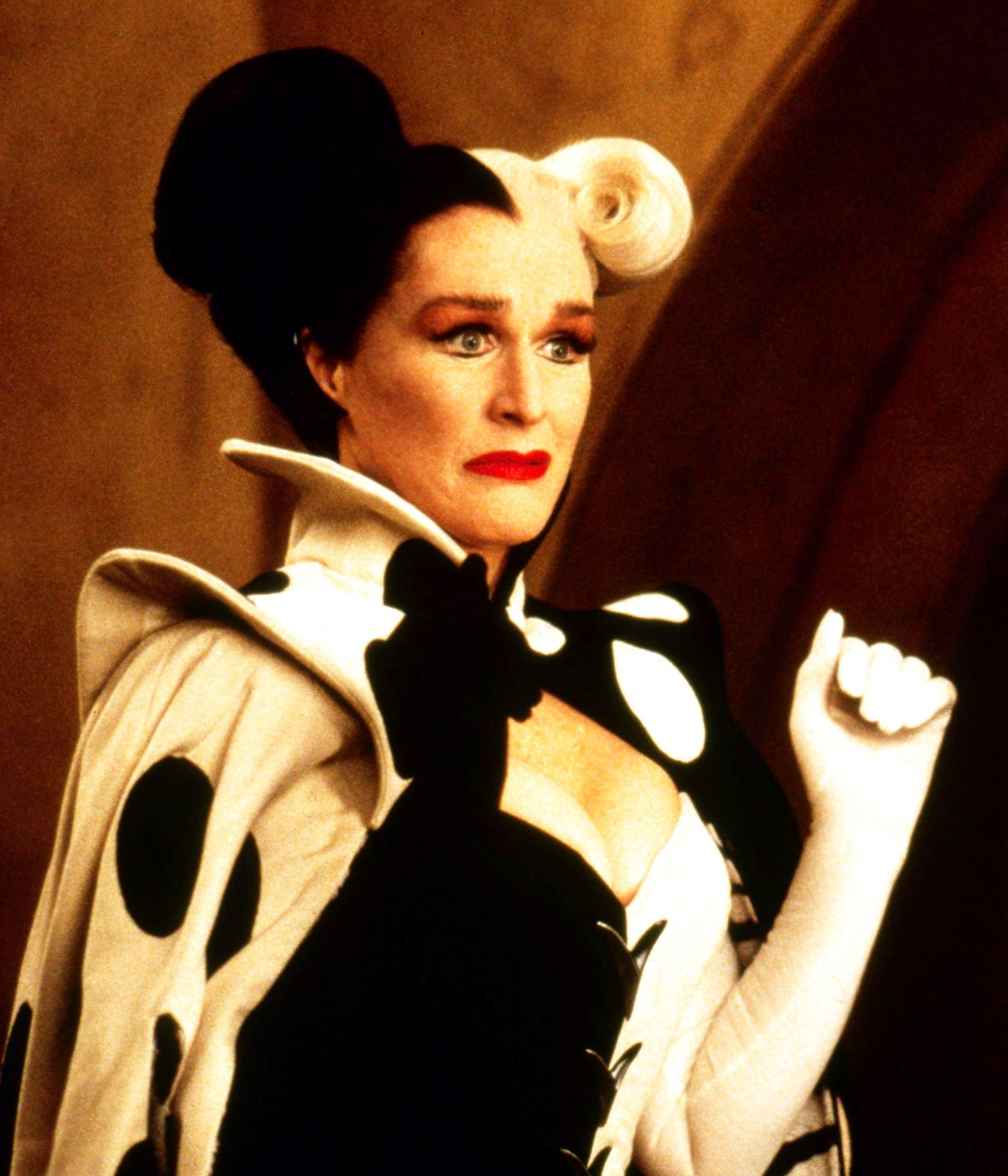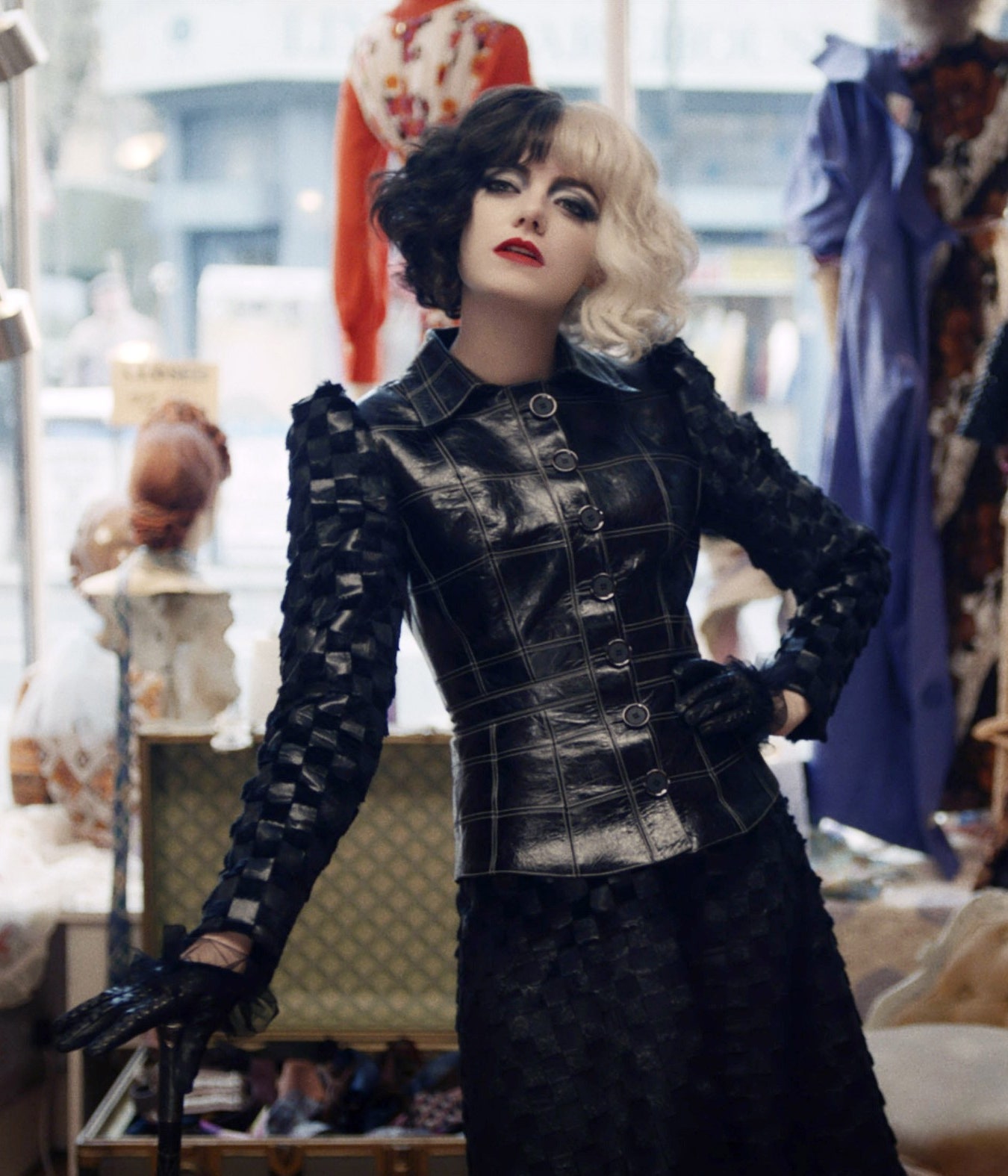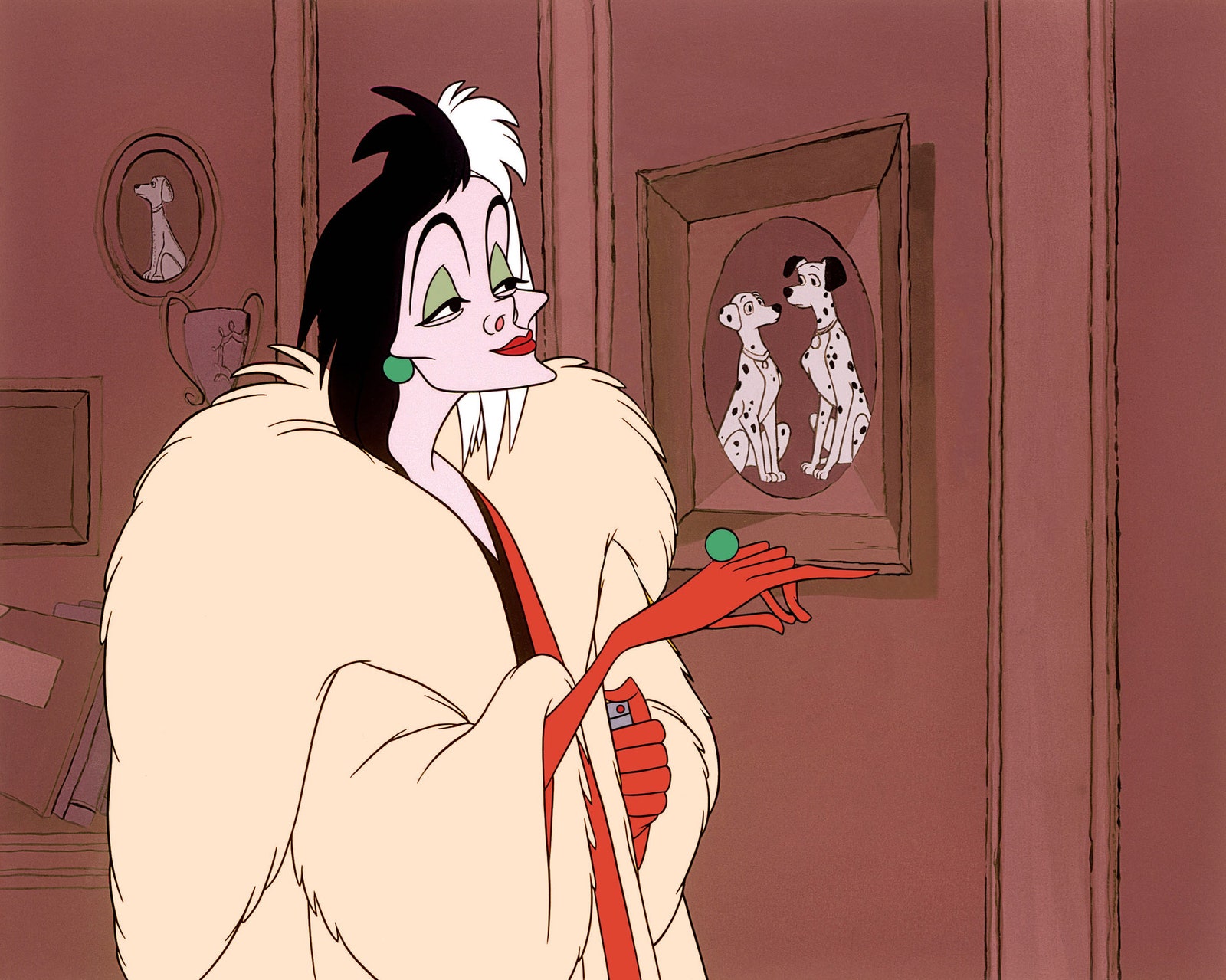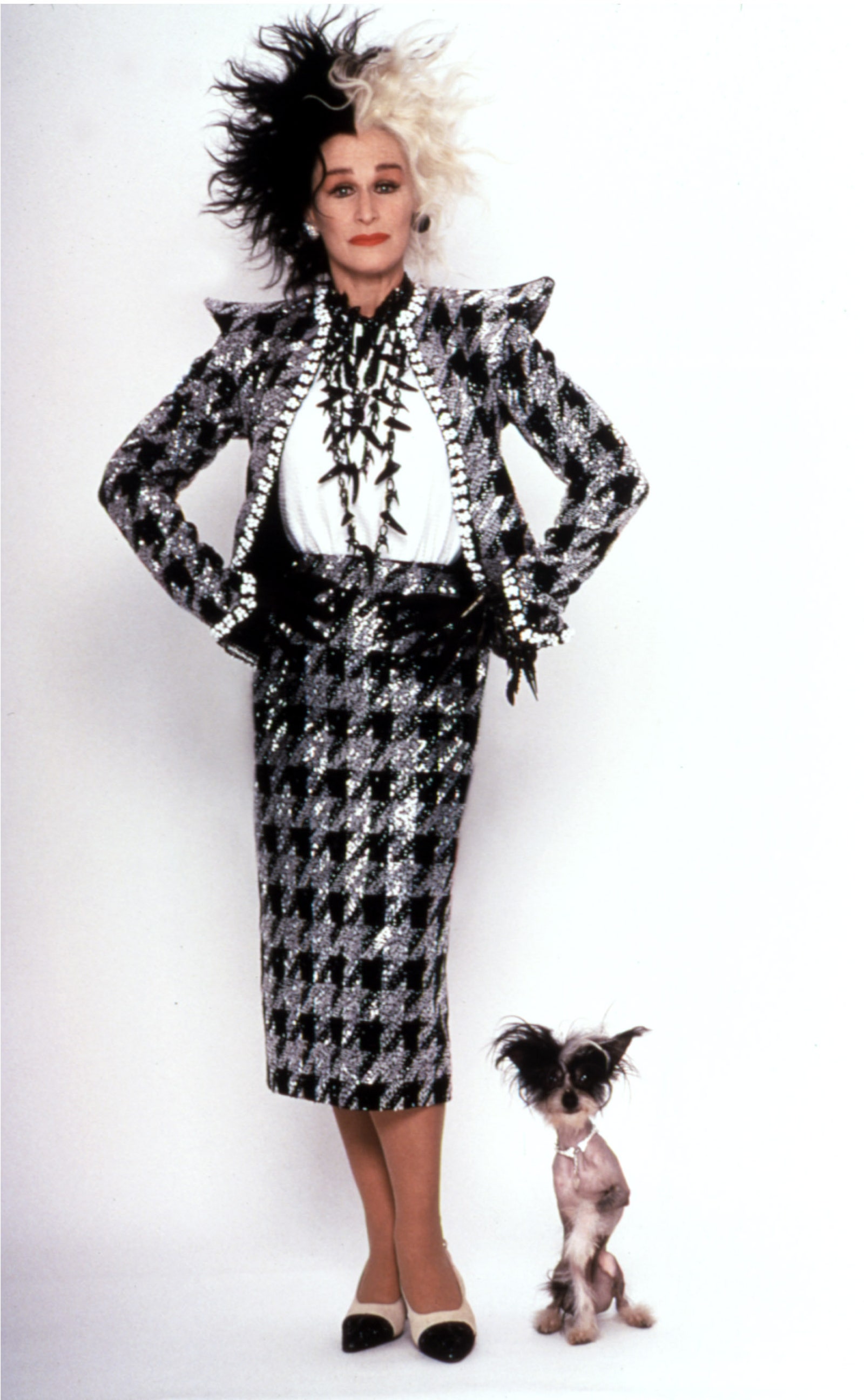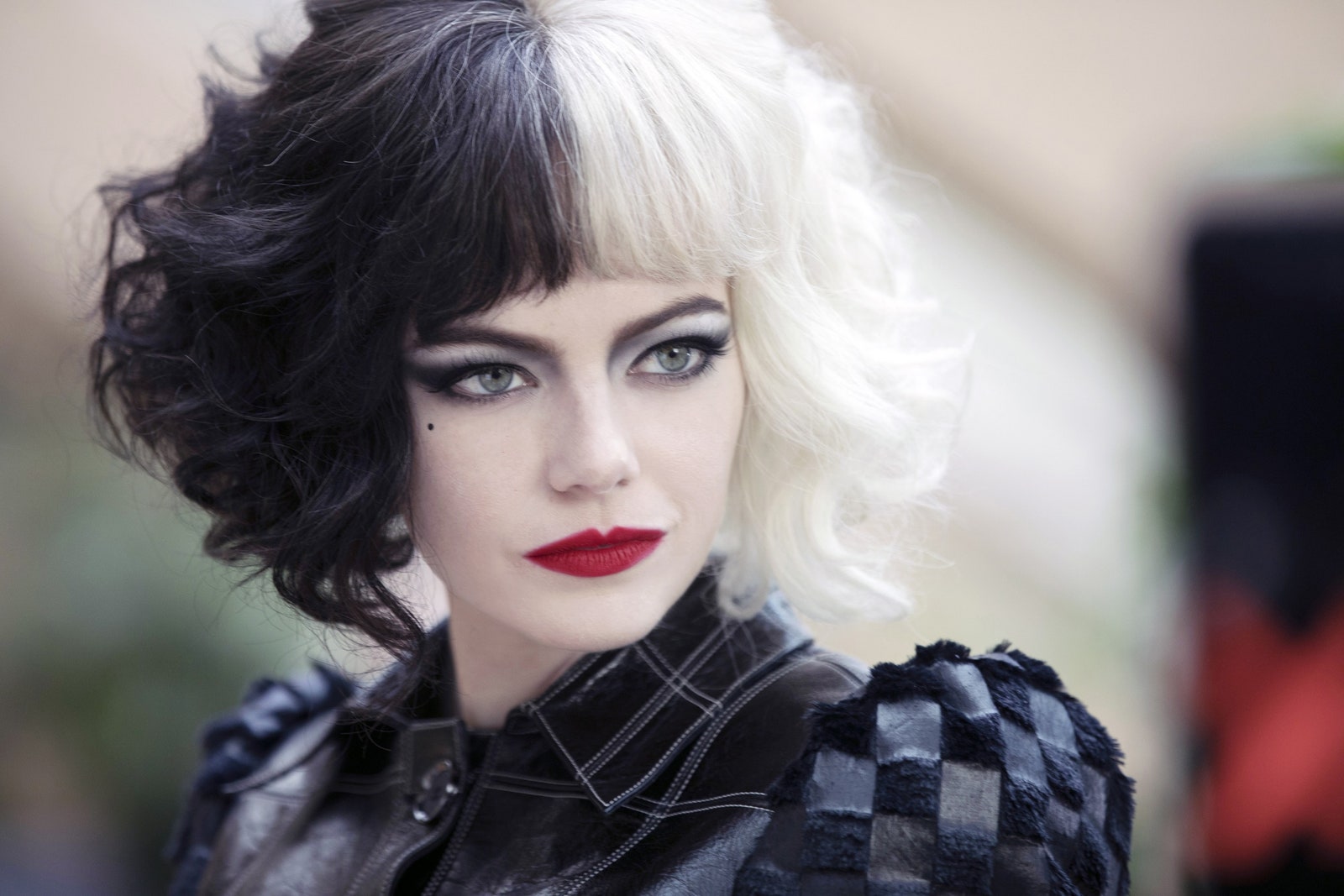In Disney’s new live-action film, the notoriously sadistic villain is getting a socially-conscious rebrand that doesn’t include an obsession with animal skins.

Cruella de Vil Has a Long History With Fur. It Ends Now
Black and white wig, Dalmatian spots, red cigarette holder. Is there a more instantly, iconically recognizable look for a villain than One Hundred and One Dalmatians' Cruella de Vil? And while other evil women in the Disney canon are focused on beauty (Snow White's Evil Queen) and decimating their rivals on the path to self-optimization (The Little Mermaid's Ursula), Cruella’s only desire is for herself—she wants to take, to conquer, to consume. She wants luxury and accumulation. She is a pitch-perfect capitalist villain.
In theaters this week, the latest live-action remake—starring Emma Stone and executive produced by Glenn Close who previously held the role in 1996—promises a new take on one of the most despicable villains in Disney history. But Cruella's origin story goes deeper than you think. Hatched from the mind of Dodie Smith in her 1956 novel The Hundred and One Dalmatians, the first version of Cruella is downright Dickensian—the kind of character whose name tells you everything you need to know. In Smith’s book, the de Vil family home, Hell Hall, was once owned by a grandfather believed to be a serial killer; one of Cruella’s other ancestors was purportedly a demon with supernatural powers. Cruella was the kid who her schoolmate Anita Darling (owner of the Dalmatian Perdita) remembers drinking ink at school for fun. Now that’s backstory.
Cruella, in 1961, 2000, and 2021
Disney ditched all that for their 1961 animated film. In this version, Cruella is ruthless without reason. She shows up at her friend's house uninvited, ready to physically abuse her partner and housekeeper. The 1996 live-action remake reimagined Glenn Close's now-legendary Cruella as Anita's boss at the high couture House of de Vil. It comes with an added layer of manipulation, given that Cruella controls Anita's paycheck. When Anita and her husband Roger refuse to sell their puppies, Cruella fires Anita on the spot, then arranges a home invasion and dognapping so as to slaughter the innocent pups for a fur coat.
Cruella is not the kind of villain audiences usually love to hate; the type who is trying to stick it to the system but must step on a few toes along the way. There is no big vision, no compassion whatsoever, just her own bloodlust for what she wants. “I think Cruella basically has no redeeming human characteristics—except she does have a sense of humor, albeit wicked," Glenn Close once said. "She’s gleeful in her evilness.”
So why do we keep remaking this monster?
The key to understanding Cruella’s appeal is to understand the way Disney obscured her brutalistic fetishism and cruelty against the glamorous backdrop of fashion. The incarnation of Cruella as a fashion designer has been essential to her contemporary success—despite her obsession with literally wearing the fur of dogs she is, by all accounts, “fabulous.” The fashion within the 1996 version, particularly, was a throwback to ‘80s excess. Cruella was portrayed as a maximalist who has a bridal-style train on her dressing gown for fun. Fur was just part of her upkeep, part of her commitment to luxury.
To be clear: Fur used to be aspirational. Fur—once called “soft gold”—was one of the United States’ primary exports from its earliest days as a 17th century British colony throughout the Industrial Revolution of the 19th century. When Cruella de Vil says, “I live for fur. I worship fur. Is there a woman in this wretched world who doesn’t?,” she is speaking the language of the upper classes as code for luxury and taste.
Today, the fashion industry debate around fur centers on whether or not it's more environmentally friendly than vegan alternatives. But animal rights were not in the cultural conversation when the first animated film was introduced. The Humane Society of the United States was founded in 1954, a mere two years before the Dalmatians book was published; PETA would not be founded until 1980. The practice of linking fur fashion explicitly with animal rights is largely contained within the last quarter of the twentieth century. Incidentally, PETA has lodged complaints with virtually every Disney Dalmatians property—including this latest one—since it was founded, insisting that Cruella as a character normalizes violence against animals. While PETA is known for their extremism, they are not alone in this particular reading of these Disney properties. Dr. Chantal Nadeau, an academic, has called the 1996 film the “quintessential fur revenge fantasy…a burlesque, even provocative piece of pro-fur rhetoric.”
Cruella’s glamour obscure the obvious fact that Cruella is a collector and a fetishist, with the kind of wealth that means any living thing is an object that can be purchased. The 1996 Cruella is not content with merely designing entire collections around whatever pelt she covets at the moment. She is into “stripes” this season, as the film opens with the murder of a Siberian Tiger who had been held in captivity at the London Zoo. Later, she is shown being presented with its pelt. Immediately sated, she scraps the entire collection, which will cost “millions!” in favor of doing “spots,” inspired by Anita Darling’s Dalmatians—which she then fixates on acquiring through any means necessary. Anita tries to persuade Cruella she thinks the designs would look better in linen, but Cruella insists that they would be “stunning in fur.” The cruelty is the point.
Rehoming Cruella in the role of wealthy fashion designer was an inspired choice on Disney’s part. Fashion is one of the only industries in which Cruella’s opinions about fur could possibly read as “debatable” rather than completely sadistic.
This latest remake, keeps Cruella in high fashion but distances her even further from the now too-politicized subject of fur. In doing so, Disney has allied themselves with entire industries as marketing partners for all future Dalmatians-inclusive properties. Much of the discussion around the new film has focused on Emma Stone’s 47 costumes, none of which contain fur. (Disney says, “In our film, the character Cruella does not in any way harm animals…Cruella doesn’t share the same motivations as her animated counterpart.” Apparently they forgot Glenn Close altogether?)
Emma Stone’s Cruella is presented as a different kind of designer than Glenn Close’s—young, cool, and angry at not being taken seriously. She lives in ‘70s London and wears looks influenced by the up-and-coming punk scene and Vivienne Westwood. This Cruella wears Doc Martens. This Cruella’s fashion is performance art rather than excessive consumerism, figured as youth vs. The Establishment (the “Baroness,” a highly structured Dior-esque designer played by Emma Thompson). This Cruella just wants to make an impression, preferably on her boss—also a woman.
However, if the rebranded 2021 Cruella does not share her predecessors’ motivations, as Disney claims, what, precisely, is there for us to look at—aside from a parade of beautiful clothes? Cruella’s appeal is that she has always provided a spectacle of cruelty—albeit a very well-dressed one. There is more to Cruella’s villainy than vanity. Although if we’re still buying what Cruella’s selling, does it even matter? She is, after all, the pitch perfect capitalist villain.
Jeanna Kadlec is a Brooklyn-based culture writer.
This story originally appeared on: Glamour - Author:Jeanna Kadlec
